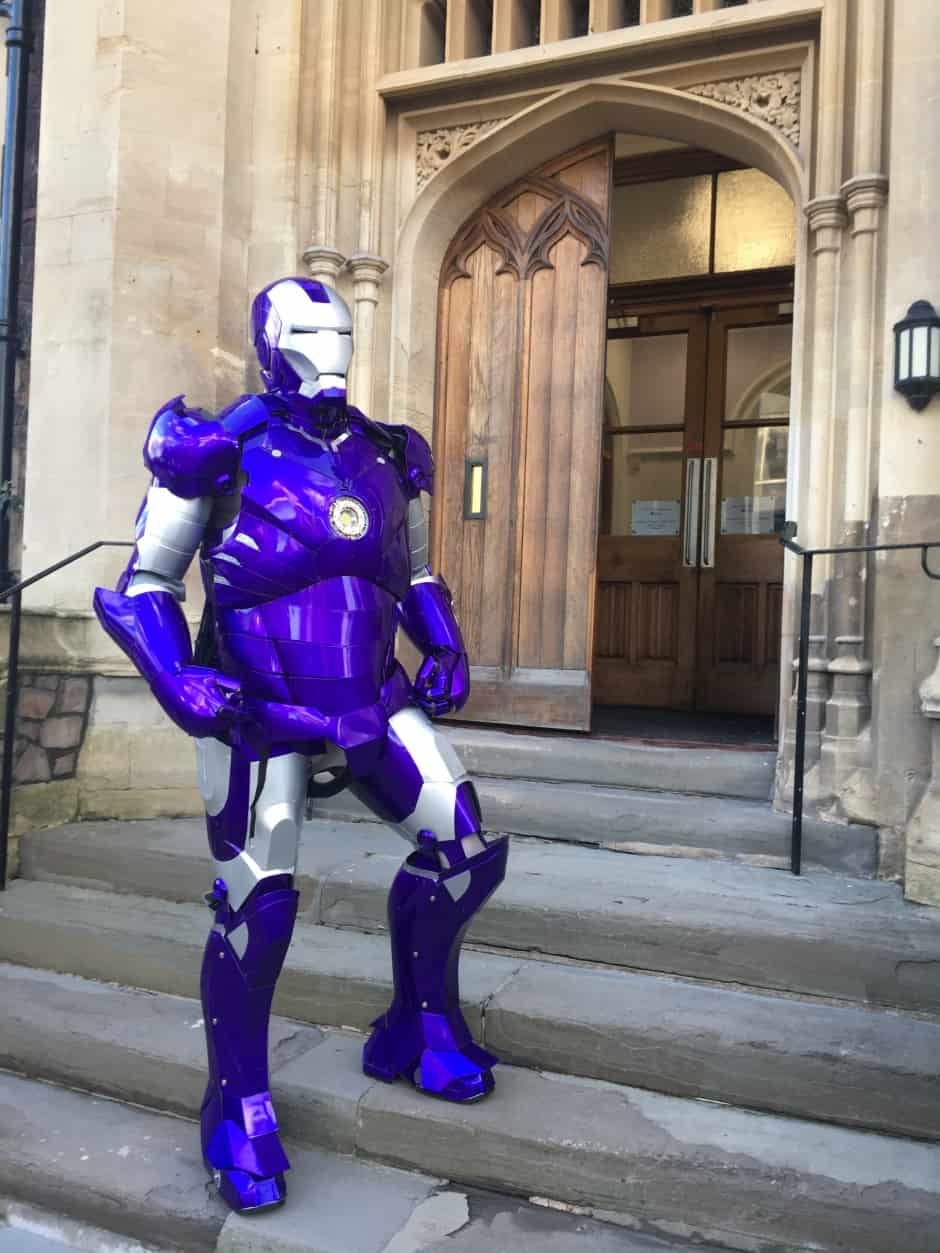The superhero Iron Man, familiar from comic books and films, is the inspiration behind the project, in which Bristol University’s South West Nuclear Hub is collaborating with Sellafield Ltd, the company which manages the large nuclear site in Cumbria and is responsible for decommissioning many of its facilities. Currently, workers in hazardous environments wear air-fed PVC suits, but these get so hot they can only be worn for a limited time. Prof Tom Scott, co-director of the Nuclear Hub, is leading the project to develop an improved robotic-composite system.

The suit, which Prof Scott stresses will look nothing like Tony Stark’s fictional outfit, will nonetheless incorporate versions of many of its features. An augmented-reality display and audio system will feed the wearer information about the tasks they will have to perform, and the suit will incorporate its own power source (although it won’t be a nuclear reactor like Iron Man’s). The protective function of the suit will be performed by composite plates which will be easier to decontaminate than PVC while also providing protection against radiation levels in the parts of the decommissioning zone that are contaminated with radioactive materials. The robotic functions, provided by a powered exoskeleton, will help reduce the mechanical load on the worker’s body if they are in a confined space or need to lift heavy items.
“Robotic and remotely-deployed technologies are already helping the Sellafield mission, but there will always be some cases where human workers are required to do hands on work in hazardous plant areas,” Prof Scott explained. “Our wearable suit concept offers the prospect of major improvements in worker protection and enhanced ergonomic capabilities.”
Other technologies being assessed for the project include eye tracking, which will help monitor worker fatigue, printable electronics to avoid having to install wiring within the suit, and hand-mounted technologies to improve detection of radiation and nuclear materials. The project is a collaboration involving the National Nuclear Laboratory, DZP Technologies, a Cambridge-based developer of speciality materials, Bristol-based radiation mapping specialist Imitec and Lightricity, an Oxford company specialising in photovoltaic energy harvesting. It is funded by a grant from Innovate UK.
Prof Scott compares the development going into this project to that which was carried out in the 1950s to improve protective wear for early astronauts. “Space and nuclear are both safety-critical industries. Just as space suits enabled transformational outcomes, making it possible for humans to go into space, further development of our suit could result in game-changing improvements in decommissioning safety and performance at Sellafield,” he said. It could also be a new source of export income, helping with the government’s goal of positioning the UK as a leader in nuclear decommissioning and waste management technologies, he added. The consortium is hoping to construct a fully working prototype following a review of the project in 2019.




Nanogenerator consumes CO2 to generate electricity
Nice to see my my views being backed up by no less a figure than Sabine Hossenfelder https://youtu.be/QoJzs4fA4fo